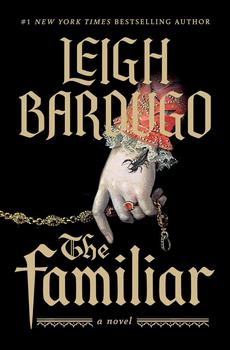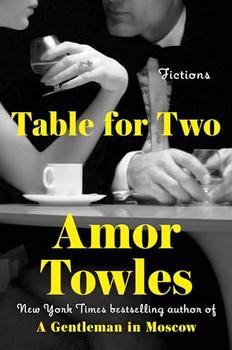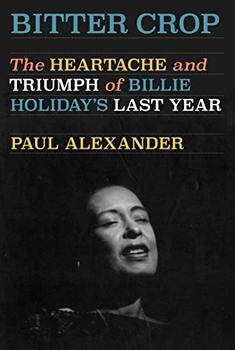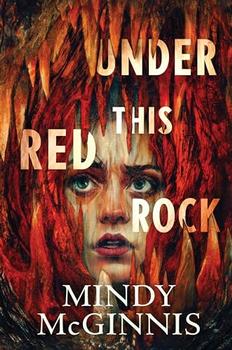After writing three novels for young adults, Diane Les Becquets describes how her first novel for adults, Breaking Wild, came about.
How do you describe Breaking Wild? What inspired you to write this story?
Breaking Wild is about a female bow hunter who goes missing in the Colorado wilderness and the female ranger who tries to find her. But to me it is about the wild spaces within us, places known only to us individually, places we cannot tame. Both Pru and Amy Raye have vast wild spaces within them. The climax of the story is when their respective wild spaces collide.
I was first inspired to write this story when I was living in Colorado and went bow hunting one evening after work. I had driven to an extremely remote area called Cyclone Pass. I began bugling back and forth with an elk, while at the same time hiking deeper and deeper into the woods. But then, I realized the sky was too dark. The moment had passed. I wasn't going to be taking a shot. I put my bugle away, and reached inside my pack for my headlamp. But when I went to turn it on, either the battery was dead, or the bulb had burned out. The moon and stars were blotted out by dark clouds. And I was lost. There were no trails. I was in the middle of deadfall. I had a compass. And I used the silhouette of the trees against the sky to get my bearings. After several hours, I found the trail that led back to my truck. But the whole thing was terrifying. As I was driving home that night, I thought about writing a story where a female bow hunter goes missing. I thought about what that could mean about her life metaphorically. I was at an impasse in my own life, and oftentimes I had that sinking feeling of being lost, of feeling totally confused at which direction to take. I still have the note a friend wrote to me during that time: Within yourself you hold the compass. Together we will choose the direction. The geography of Breaking Wild is a metaphor for these women's lives.
Tell us about the research that went into this novel. How were you able to write so vividly about bow hunting, tracking, and the outdoors?
I have loved spending time outdoors for as long as I can remember, whether it was exploring the woods and the creek behind my childhood home in Tennessee, or riding a four wheeler through the woods in the Upper Peninsula of Michigan where my father's family is from. Very simply, I have to be outdoors. It is where I feel alive. I have hunted with a rifle and a bow, though I prefer hunting with a bow. I have also tracked an elk for hours and hours in a rainstorm that later turned to snow. And I have spent hot summer days working in the high desert beside brilliant archaeologists. All of these experiences became research for the novel. Additionally I backpacked and camped in the areas where Amy Raye goes missing. I tried to imagine and experience her paths, as well as those of Pru, including using an ice axe and rappelling down rock faces with a thin rope. And I lived for almost fourteen years in Meeker, Colorado, a small ranching town in Northwestern Colorado. Rio Mesa is based on that town.
How much of the book is informed by your own experiences?
A number of my own experiences found their way into the book, such as hiking in the woods to a tree stand at 3:30 in the morning. Or peeing into a Nalgene water bottle while I was strapped into a tree stand and covered in elk estrus. I have also hiked and camped in the same areas as my two female characters. And I have loved and lost, as Pru did. I've been alone with only my dog to comfort me at times. I've seen the wild horses. And I watched my late husband, Shaun, suffer from and overcome many of the same struggles as Amy Raye. And yet, still, these women's stories are their own.
What is your relationship to the Colorado wilderness?
After moving to Meeker, everything felt right for a time. I felt at home. While living in Meeker, I spent as much time as I could exploring the land around me, from China Wall that borders the town, to the Flat Tops Wilderness, to the high desert. I worked with archaeologists at field schools in the summers and helped them survey sites in the fall. I hunted in the fall, and hiked with snowshoes in the winter. I camped and hiked, and had the privilege of helping to move a herd of sheep to higher pasture. New Hampshire is home now, and I have learned to love two places. But when I moved, I cried all the way to the other side of Kansas, because at the time, no other place seemed possible.
Discuss your two main protagonists, Amy Raye and Pru. How are they alike? Different?
Both Amy Raye and Pru are strong women with strong spirits. They are independent and are not afraid of being alone. They are also physical women, and require physical interaction with nature. Pru, however, is a cause and effect person. Her reality is what lies in front of her. She is solid and steady. In many ways she is the grounding force in the novel. Amy Raye is complicated. She struggles to understand what is real and what is a product of what she has created.
Do you relate to one of the characters more?
When I was twenty, my first love, a tall, strapping forestry major, passed away in a car accident. He was in my life for two years. Much later in my life I fell in love with another forester, whom I married. He also was in my life for two years before passing away. Both times the grief consumed me, and it was through time alone in the woods and hiking mountains and camping beneath the stars where I found comfort and began to heal. It is Pru's capacity to love and her capacity to feel grief, as well as her process to heal, to live alone with her son, that I relate to the most. But I also relate to Amy Raye's ability to question and to seek answers and understanding. And I relate to both women's independent spirits.
Did you set out to tell two separate but parallel stories?
The novel began with a prologue about a hunter, followed by opening chapters from Pru's point of view. But then the novel stalled and I put it aside for years. It was after my late husband's death from brain cancer that the parallel story lines emerged. For much of my late husband's life, he was tortured with the same struggles as Amy Raye. In my desire to understand him more fully, Amy Raye emerged on the page and became the driving force behind the novel.
People have immediate and visceral reactions to hunting, both pro and con. What do you think explains it?
The visceral reactions have to do with death and harming a beautiful animal. For most hunters I know, especially bow hunters who have to get within close range of the animal, the hunt can take on a spiritual quality, and rarely do I see a hunter who is not moved emotionally when an animal is taken down. Death is both sad and mysterious. But hunting is also a positive experience on a visceral level, as well. It is empowering to learn the behaviors of an animal, to perfect a skill that allows the hunter to get within close shooting range, and to feel a primal connection to the environment and the wild. And I am not referring to trophy hunters. I am referring to those hunters who use as much of the animal as they can. Most hunters I know even tan the hide. The entire hunting process becomes a visceral connection with the wilderness, a deep respect for the sustenance an animal can provide. It is just you and the animal. It is a profoundly intimate reality.
What are the challenges of setting a novel outdoors? What are the benefits?
To truly and authentically capture a natural setting, the writer should make every effort to build a relationship with that natural setting. That doesn't just mean an author must visit the setting. A relationship requires time and observation. It also requires listening to and interacting with one's surroundings. I spent many nights camping in the area where Breaking Wild takes place. I spent long days hiking off trail. And yet, with this kind of relationship, there are challenges – there are arrangements that must be made in regards to time away from work and family. There is the cost of travel. Though I had lived in the area for almost fourteen years, while working on the book and living in New Hampshire, I made frequent trips to Colorado for research.
The benefits are two-fold. First, writing a novel that takes place in the natural world requires me to spend time alone in such magnificent country. It is the greatest solace and invigoration that I know. And secondly, it is a gift I can give my reader. I have the capability to transport my readers to places they may never have the opportunity to experience first hand. There is incredible joy in being able to share with my audience a place I both revere and love.
You've written three young adult novels. Why did you decide to write Breaking Wild for an adult audience?
I never thought of myself as a young adult writer. I simply wrote the stories that came to me. However, I believe the age of each of the protagonists had to do with different situations in my life, places where I was stuck emotionally. The novels were a way for me to work through those places and emerge on new ground. I like the ground where I am standing now.
What do you think readers will take away after reading Breaking Wild?
I hope the novel will excite readers and inspire them to either connect or reconnect with the natural world. I also think the novel and its characters teach us of the human capacity to persevere, to love, and to forgive. There are a lot of four letter words out there. My two favorites are hope and love.
Unless otherwise stated, this interview was conducted at the time the book was first published, and is reproduced with permission of the publisher. This interview may not be reproduced or reprinted without permission in writing from the copyright holder.





The House on Biscayne Bay
by Chanel Cleeton
As death stalks a gothic mansion in Miami, the lives of two women intertwine as the past and present collide.

The Flower Sisters
by Michelle Collins Anderson
From the new Fannie Flagg of the Ozarks, a richly-woven story of family, forgiveness, and reinvention.

The Funeral Cryer by Wenyan Lu
Debut novelist Wenyan Lu brings us this witty yet profound story about one woman's midlife reawakening in contemporary rural China.
Your guide toexceptional books
BookBrowse seeks out and recommends the best in contemporary fiction and nonfiction—books that not only engage and entertain but also deepen our understanding of ourselves and the world around us.